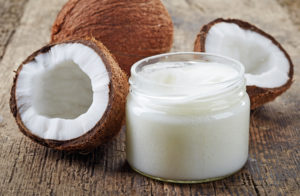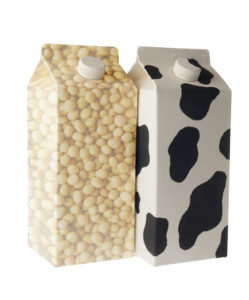** In the Wake of FDA’s Guidance, Evaporated Cane Juice Cases Continue . . . . **
By: Brent E. Johnson
As we have blogged about in the past the Food and Drug Administration (FDA) issued guidance in 2016 that it is false or misleading to describe sweeteners made from sugar cane as “evaporated cane juice” (ECJ). Guidance for Industry: Ingredients Declared as Evaporated Cane Juice.
It is common knowledge that cane sugar is made by processing sugar cane – crushing the cane to extract the juice, evaporating that juice, and crystalizing the syrup that remains. To make white sugar, the crystals undergo additional crystallization to strip out molasses. The primary difference between standard white sugar and the product known as ECJ is that the latter skips the second crystallization process. ECJ is sold as a standalone product (e.g., in health food stores) and since the early 2000’s has been introduced as a white sugar substitute in products such as yogurt and lemonade.
The plaintiffs’ bar alleges that ECJ is identical to refined sugar from a nutrient and caloric standpoint and, therefore, food labelling using the term ECJ misleads health-conscious consumers into thinking it is a better sweetener option (or not sugar at all). Defendants respond that ECJ is precisely what it says — the evaporated juice from the cane of the sugar plant — and is therefore a wholly accurate term to describe a type of sweetener that is made from sugar cane but undergoes less processing than white sugar. See e.g., Morgan v Wallaby Yogurt Company, No. CV 13-0296-CW, 2013 WL 11231160 (N.D. Cal, April 8, 2013) (Mot. to Dismiss).
FDA regulations are implicated in this controversy because they prohibit the use of an ingredient name that is not the “common or usual name” of the food. 21 CFR 101.3 (b) & (d). The common or usual name of a food or ingredient can be established by common usage or by regulation. In the case of “sugar,” FDA regulations establish that sucrose obtained by crystallizing sugar cane or sugar beet juice that has been extracted by pressing or diffusion, then clarified and evaporated, is commonly and usually called “sugar.” 21 CFR 101.4(b)(20). The question for the FDA in 2016 when it was considering its ECJ Guidelines, therefore, was whether ECJ fits under this definition and therefore should be identified by the common or usual name – sugar. This question was complicated by FDA’s heavy regulation of the term “juice,” which is also defined in the federal register. 21 CFR 101.30.
On October 7, 2009, FDA first stepped into the ECJ fray, publishing a draft guidance entitled “Guidance for Industry: Ingredients Declared as Evaporated Cane Juice” (74 FR 51610) to advise the relevant industries of FDA’s view that sweeteners derived from sugar cane syrup should not be declared on food labels as “evaporated cane juice” because that term falsely suggests the sweetener is akin to fruit juice. On March 5, 2014, FDA reopened the comment period for the draft guidance seeking further comments, data, and information (79 FR 12507). On May 25, 2016, FDA updated this guidance (81 FR 33538), superseding the 2009 version, but not changing its position that it is false or misleading to describe sweeteners made from sugar cane as ECJ. FDA reasoned that the term “cane juice”— as opposed to cane syrup or cane sugar—calls to mind vegetable or fruit juice, see 21 CFR 120.1(a), which the FDA said is misleading as sugar cane is not typically eaten as a fruit or vegetable. As such, the FDA concluded that the term “evaporated cane juice” fails to disclose that the ingredient’s “basic nature” is sugar. 2016 Guidance, Section III. As support, FDA cited the Codex Alimentarius Commission — a source for international food standards sponsored by the World Health Organization and the United Nations. FDA therefore advised that “‘evaporated cane juice’ is not the common name of any type of sweetener and should be declared on food labels as ‘sugar,’ preceded by one or more truthful, non-misleading descriptors if the manufacturer so chooses.” 2016 Guidance, Section III.
Bear in mind that FDA guidance is not binding on courts and, in and of itself, does not create a private right of action. 21 U.S.C. § 337(a) (“[A]ll such proceedings for the enforcement, or to restrain violations, of [the FDCA] shall be by and in the name of the United States”); see POM Wonderful LLC v. Coca-Cola Co., 573 U.S. ___ (2014); Buckman Co. v. Pls.’ Legal Comm., 531 U.S. 341, 349 n.4 (2001); Turek v. Gen. Mills, Inc., 662 F.3d 423, 426 (7th Cir. 2011); see also Smith v. U.S. Dep’t of Agric., 888 F. Supp. 2d 945, 955 (S.D. Iowa 2012) (holding that there is no private right of action under USDA statute). In false advertising cases, the governing test is what consumers, themselves, think – not what FDA thinks. For example, in Mason v. Coca-Cola Co., plaintiffs alleged that “Diet Coke Plus” was misleading because the word “Plus” implied the product was “healthy” under FDA regulations. 774 F. Supp. 2d 699 (D.N.J. 2011). The court begged to differ: “At its core, the complaint is an attempt to capitalize on an apparent and somewhat arcane violation of FDA food labeling regulations . . . not every regulatory violation amounts to an act of consumer fraud . . . . It is simply not plausible that consumers would be aware of [the] FDA regulations [plaintiff relies on].” Id. at 705 n.4; see also Polk v. KV Pharm. Co., No. 4:09-CV-00588 SNLJ, 2011 WL 6257466, at *7 (E.D. Mo. Dec. 15, 2011); In re Frito-Lay N. Am., Inc. All Natural Litig., No. 12-MD-2413 RRM RLM, 2013 WL 4647512, at *15 (E.D.N.Y. Aug. 29, 2013) (“[T]he Court [cannot] conclude that a reasonable consumer, or any consumer, is aware of and understands the various federal agencies’ views on the term natural.”) That said, while FDA’s guidance is not alone dispositive – it certainly lends weight to the question of what a consumer’s state of mind would be with respect to the question of false and misleading labelling.
In the interim between FDA opening up public comment in 2014 on the ECJ question and its release of the 2016 guidance, many cases on this issue were stayed awaiting the outcome of FDA’s deliberations (based on the primary jurisdiction doctrine). Saubers v. Kashi Co., 39 F. Supp. 3d 1108 (S.D. Cal. 2014) (primary jurisdiction invoked with respect to “evaporated cane juice” labels) (collecting cases) see, e.g., Gitson, et al. v. Clover-Stornetta Farms, Inc., Case No. 3:13-cv-01517-EDL (N.D. Cal. Jan. 7, 2016); Swearingen v. Amazon Preservation Partners, Inc., Case No. 13-cv-04402-WHO (N.D. Cal. Jan. 11, 2016). With that guidance published, the stayed suits are now set to proceed. And, as to be expected, many new cases have been filed over ECJ labeling. Notably, complaints have been filed far away from the traditional “food court” in the Northern District of California. For example, more than a dozen ECJ cases have recently been filed in St. Louis – the targeted defendants include manufacturers of Pacqui Corn Chips (Dominique Morrison v. Amplify Snack Brands Inc., No. 4:17-cv-00816-RWS (E.D. Mo.) and Bakery on Main Granola (Callanan v. Garden of Light, Inc., No. 4:17-cv-01377 (E.D. Mo.)
Where are courts landing on the ECJ question?
In Swearingen v. Santa Cruz Natural, Inc., No. 13-cv-04291 (N.D. Cal.), a complaint was filed on September 16, 2013, stating that plaintiffs were health-conscious consumers who wish to avoid “added sugars” and who, after noting that “sugar” was not listed as an ingredient, were misled when they purchased Santa Cruz Lemonade Soda, Orange Mango Soda, Raspberry Lemonade Soda, and Ginger Ale Soda which contained ECJ. On July 1, 2014, the matter was stayed by Judge Illston pursuant to the primary jurisdiction doctrine. The stay was lifted in June 2016 following a status conference noting the FDA’s final guidance on ECJ – and thereafter supplemental briefing on Santa Cruz’s motion to dismiss was considered. The Court issued its order on August 17, 2016 (2016 WL 4382544), refusing to dismiss under Rule 12, noting the following:
- Products not purchased. Santa Cruz argued that plaintiffs had not claimed to have personally purchased every single beverage referred to in the complaint and therefore lacked standing as to those products. Judge Illston, however, sided with those courts that have concluded that an actual purchase is not required to establish injury-in-fact under Article III, but rather, that when “plaintiffs seek to proceed as representatives of a class . . . ‘the critical inquiry seems to be whether there is sufficient similarity between the products purchased and not purchased.” 2016 WL 4382544 at *8 (quoting Astiana v. Dreyer’s Grand Ice Cream, Inc., 2012 WL 2990766, at *11 (N.D. Cal. July 20, 2012). Because all of the fruit beverages at issue were of the same type of food product, Judge Illston concluded the plaintiffs had standing for all of them.
- Ingredient Lists. Santa Cruz also argued that plaintiffs could not meet the “reasonable consumer” test of the California consumer protection statutes because it was implausible that a consumer would read the mandatory Nutrition Facts label immediately adjacent to the impugned ingredient list – which clearly identified the product as having 29 grams of sugar — and conclude that it did not contain added sugar. Judge Illston noted that she had “some reservations as to whether a reasonable consumer would be misled as regarding added sugars in the Lemonade Soda and Ginger Ale Soda” – whose 35 grams and 32 grams of sugar, respectively, were unlikely to occur naturally in ginger root or lemon juice. She found that the other sodas were closer calls (a reasonable consumer might conclude that the 29 grams of sugar in the Orange Mango Soda, for example, occurred naturally in the orange juice and mango puree listed as ingredients). Nonetheless, she concluded the question of whether a reasonable consumer would have been misled was a question better decided by a jury and on that basis could not be dismissed under Rule 12.
The matter was thereafter voluntarily withdrawn on May 5, 2017, prior to certification. One can reasonably assume the withdrawal was the result of settlement – but because the settlement was pre-certification pursuant to Federal Rule 23(e) and was not a class action resolution — no notice or court oversight was required.
In a similar case involving Steaz flavored ice teas, Swearingen v. Healthy Beverage, LLC, No. 13-CV-04385-EMC (N.D. Cal.), the complaint was filed on September 20, 2013, and followed the same allegations of the Santa Cruz case. On June 11, 2014, Judge Chen stayed the matter pursuant to the primary jurisdiction doctrine. The stay was lifted on July 22, 2016, and on October 31, 2016, Healthy Beverage moved to dismiss. The Court ruled on the motion on May 2, 2017, finding for the defendant.
Website Disclosure. Judge Chen found (in some respects) the opposite of Judge Illston in the Santa Cruz case on this issue of whether disclosure of the sugar content in the product negates whatever confusion may arise from ECJ labelling. Healthy Beverage argued that, because it stated on its website [but not on its packaging] that “cane juice is natural sugar,” and plaintiffs’ counsel acknowledged that the plaintiffs “may have looked” at the website, , plaintiffs could not have been under any illusions that ECJ is anything but sugar. Plaintiffs’ counsel at the motion hearing answered that plaintiffs “did not focus” on that information on the website. Judge Chen did not consider this qualification sufficient,, finding that whether or not the plaintiffs “focused” on Healthy Beverage’s disclosure, they conceded that they read it and, therefore, reliance on the packagaging’s ECJ label was not reasonable.
Reese v. Odwalla, Inc., No. 13-CV-00947-YGR (N.D. Cal.) followed the same path as the previous two cases – a Complaint filed in 2013, stayed in 2014, and revived in 2016 after FDA released its ECJ guidance. The product is Coca-Cola’s Odwalla brand smoothies and juices labelled with ECJ. On October 10, 2016, a motion to dismiss was filed by Odwalla that the Court ruled on in February of 2017:
Premption: The crux of Odwalla’s motion to dismiss was express federal preemption. Odwalla argued that, where the FDCA provides that “no State . . . may directly or indirectly establish under any authority . . . any requirement for a food . . . that is not identical to such standard of [the FDCA]” (21 U.S.C. § 343-1(a)(1)) and the FDA’s guidance on the use of the term ECJ only became final in August 2016, there were no laws prohibiting the use of ECJ prior to the issuance of the 2016 Final Guidance. Thus, the retroactive imposition of such prohibition would amount to an imposition of non-identical labeling requirements and would therefore be preempted (citing to Wilson v. Frito-Lay N. Am., Inc., 961 F. Supp. 2d 1134, 1146 (N.D. Cal. 2013) (finding that retroactive application of FDA’s clarification of an ambiguous regulation would offend due process); Peterson v. ConAgra Foods, Inc., No. 13-CV-3158-L, 2014 WL 3741853, at *4 (S.D. Cal. July 29, 2014) (finding that federal law preempted state claims based on labels prior to FDA’s clarification of labeling requirements). Judge Rogers rejected this argument, noting that neither the 2009 Draft Guidance nor the 2016 Final Guidance announced a new policy or departure from previously established law. Judge Rogers reasoned that FDA merely confirmed that ECJ fits the definition of sucrose under the regulations, and, therefore, needs to be labeled as “sugar.” Thus, the Court found that the State law claims did not contradict Federal law and were not preempted. This same preemption argument was also rejected in Swearingen v. Late July Snacks LLC, No. 13-CV-04324-EMC, 2017 WL 1806483, at *8 (N.D. Cal. May 5, 2017).






 ** Do we have a new “sue-me” State for Food and Class Litigators? **
** Do we have a new “sue-me” State for Food and Class Litigators? ** Judge Lucy H. Koh gave all natural class defendants cause for celebration back in 2014 when she closed the door on a putative class representative’s claim that Dole’s fruit juices and fruit cups were wrongfully labelled as “All Natural.” Brazil v. Dole Packaged Foods, LLC, No. 12-CV-01831-LHK, 2014 WL 6901867 (N.D. Cal. Dec. 8, 2014). Last week, however, the Ninth Circuit re-opened that door slightly – at least enough for the plaintiffs’ bar to try to squeeze their feet in.
Judge Lucy H. Koh gave all natural class defendants cause for celebration back in 2014 when she closed the door on a putative class representative’s claim that Dole’s fruit juices and fruit cups were wrongfully labelled as “All Natural.” Brazil v. Dole Packaged Foods, LLC, No. 12-CV-01831-LHK, 2014 WL 6901867 (N.D. Cal. Dec. 8, 2014). Last week, however, the Ninth Circuit re-opened that door slightly – at least enough for the plaintiffs’ bar to try to squeeze their feet in. We have blogged in the past about some of the “usual suspects” in the consumer class action line-up – particularly for food, beverage, cosmetics and related industries – for example, the
We have blogged in the past about some of the “usual suspects” in the consumer class action line-up – particularly for food, beverage, cosmetics and related industries – for example, the 